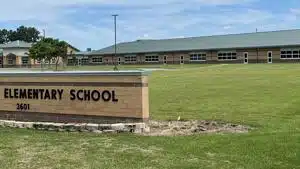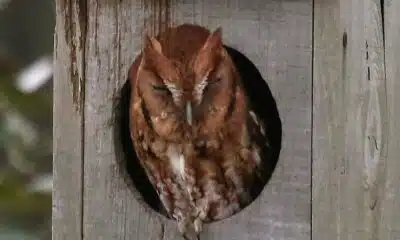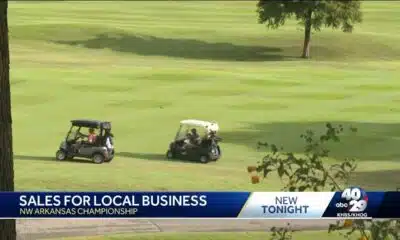(The Center Square) – U.S. Immigration and Customs Enforcement agents based in Houston continue to arrest and remove violent criminals illegally in the U.S. In several targeted operations, agents arrested more than 600 criminal foreign nationals, including scores who were previously deported multiple times, confirmed gang members, sex offenders and fugitives.
ICE agents recently removed Orbelin Benitez-Carbajal, a criminal Mexican national previously deported and convicted of manslaughter. He was returned to Mexico last week after previously being deported in 2014 and illegally reentering the country last January. His criminal record includes manslaughter and assault in Travis County, driving while intoxicated in Austin and illegal entry in west Texas in January 2024.
An-eight time removed Mexico national, Baltazar Pantoja Calderon, was also removed from the U.S. this month. He was convicted on charges of kidnapping, driving while intoxicated, illegal entry and resisting arrest. Each time he illegally entered the U.S., he was caught and returned to Mexico, including this month.
Another Mexican national, Leticia Caballero Guadarrama, was removed to Mexico this month after having been removed six times going back to 2002. Her criminal record includes 14 convictions, including six for DWIs, six for theft or larceny, and two for refusing to provide identification to law enforcement.
In his more than 30-year career, ICE Enforcement and Removal Operations Houston Field Office Director Bret Bradford said few things “surprise” him, but Guadarrama’s actions were “shocking. After repeatedly entering the country illegally and getting behind the wheel intoxicated, she has victimized hard-working Texans over and over again by stealing their money and property and then attempted to avoid accountability by refusing to provide law enforcement with identification after she was caught. By carelessly flaunting our system of laws, her actions endangered everyone in the community and have wasted significant taxpayer-funded government resources.”
ICE-Houston agents also removed Mexican national Ariel Nunez Figueroa this month who was wanted by Mexican authorities for kidnapping and organized crime. He was allegedly involved in the 2014 murder of 43 students from the Ayotzinapa Teachers’ College, authorities said. He illegally entered the U.S. as a gotaway at an unknown location on an unknown date. Last September, Interpol notified ICE that he was potentially living in the Houston area. ICE agents tracked him down and took him into custody. An immigration judge ordered his removal in January.
“For nearly eleven years, this foreign fugitive evaded authorities while the family and friends of those 43 students who were brutally murdered patiently awaited justice for their loved ones,” Bradford said. “Thanks to outstanding teamwork by ICE, Interpol and the U.S. Embassy in Mexico, we were able to successfully track him down and remove him to Mexico to face prosecution for his alleged crimes.”
In a targeted removal operation, ICE agents arrested nine criminal foreign nationals in the Houston area convicted of a range of sex offenses and other charges. They include a three-time deported Salvadoran charged with continuous sexual assault of a minor; a three-time deported Mexican national convicted of aggravated sexual assault of a minor; Cuban nationals convicted of aggravated sexual assault, sexual battery with a weapon, kidnapping; Vietnamese nationals convicted of abduction with intent to extort money for an immoral purpose, illegal possession of a weapon, burglary, and gross sexual imposition with a minor under age 13; a Mexican national convicted of indecency with a minor; a Philippine national convicted of aggravated sexual assault of a minor and cocaine possession.
In a separate one-week operation, working with multiple federal, state and local law enforcement partners, ICE agents arrested 646 illegal foreign nationals, including 543 who’d been charged or convicted of criminal offenses while in the country illegally, including seven documented gang members. Federal agents executed 71 criminal arrest warrants and arrested 543 criminal illegal foreign nationals.
Those arrested include:
140 charged or convicted of an aggravated felony or other violent crimes like homicide, aggravated assault, or domestic violence;
34 charged or convicted of sex offenses, including aggravated sexual assault of a minor, possession of child pornography, or rape;
38 convicted of illegal firearms offenses, including unlawful carrying of a firearm, alien in possession of a firearm and aggravated assault with a firearm;
52 charged or convicted of illicit narcotics offenses, including drug trafficking, or possession of a controlled substance;
51 charged or convicted of property crimes like burglary or theft;
93 charged or convicted of driving while intoxicated.
“In recent years, some of the world’s most dangerous fugitives, transnational gang members and criminal aliens have taken advantage of the crisis at our nation’s southern border to illegally enter the U.S.,” Bradford said. “After illegally entering the country, many of these criminal aliens have gone on to commit violent crime and reign terror on law-abiding residents.”
Their arrests, he said, have sent a “resounding message to transnational criminal organizations everywhere that the law enforcement community in the Texas Gulf Coast is more united than ever and will not rest until we’ve eradicated these criminal elements from the country.”
















































